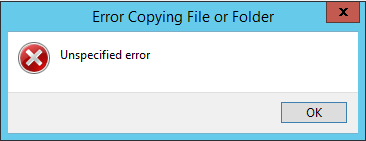In my last article, I described the risks of relying on Excel spreadsheets for critical business decisions and processes.
Many of us have used outsized Excel sheets that are processing large pools of source data through multiple processing steps, possibly with the use of macros copying data from one sheet to another (but most often simply using formulas that reference data from other workbooks).

As almost everyone reading this article would have at some point experienced for themselves, these complex spreadsheets are accidents waiting to happen, especially when they are handed from one owner to another. Most of the time, these tools are built by so-called citizen developers, who possess the competence to understand the required calculations and have taught themselves Excel, but lack the programming knowledge required to be able to code these tools in a more stable runtime environment.
Meanwhile, the demands of digital business are accelerating at such a rate that IT departments are swamped. The rise of the citizen developer is a natural response to a mounting problem. Manual touchpoints inside business processes are known as ‘small app gaps’. These points-of-failure are not large enough to warrant the attention of the IT team, but collectively important enough to bring down the productivity of a firm.
So what’s the answer?
One solution comes in the form of ‘low code’ applications. This is a new, visual-driven way of building software and apps, simplifying life for both IT professionals and citizen developers.
Professional developers - the IT department - can take advantage of low-code to focus on developing complex, enterprise-grade solutions with greater speed and fewer resources. The advantage is that the user still has the option to customize the system, but without the risk that often comes with directly editing the raw code.
Citizen developers, on the other hand, can use an even simpler form of low-code referred to as ‘no code’. In this approach, the user is completely shielded from the underlying complexities, and no familiarity with coding is expected or required. No-code platforms enable users to build simple applications to plug the thousands of ‘small app gaps’ that drain productivity.
The benefits of low-code are many, but include:
-
Speed of development and more importantly, agility in responding to changes in requirements
-
Ability to multiply the resource pool without having to hire more staff, by training citizen developers
-
Solutions are easier to maintain and can be deployed across the organization via a cloud-native architecture
-
Allow for the integration of cutting-edge technologies, including artificial intelligence, to enhance processes as well as making them more efficient.
To date, the most common use cases are building web and mobile portals for customer interaction. Theoretically however, there is no limit to the potential use cases for low-code. The near-term potential clearly lies in automating and streamlining processes with manual input and significant user error risk. This can include the creation of APIs to help integrate silo-based systems and eliminate the need for manual transmission (for instance, using Excel).
But it is still early days. The pandemic has boosted both the need for and the uptake of low-code solutions. Gartner predicts the field will grow by 23% in 2021, and that by 2024 it will account for more than 65% of application development activity.
This holds out the hope of ending the divide between IT departments and the business as a whole. A low code platform is something that both sides can contribute to, and hence creates a sense of collaboration, rather than a feeling of separate domains.
While the process of developing a new solution is collaborative, IT naturally retains overall ownership of all development activities, and there is no more ‘rogue’ activity.
Citizen developers, however, have the autonomy to design and own the apps they create. In addition to providing a stable and secure development of tools and processes that can be deployed to a large user base, the approach also allows an organization to control access to data, and provides an audit trail for user interactions. From a governance perspective, this is perhaps the most important benefit of any automation-based initiative.
So how do you move ahead, and where do you start?
For organizations that have limited experience of deploying low-code solutions in a collaborative manner, the main point to bear in mind is a cultural one. Both sides of the business need to get used to working collaboratively, and this is a change management process that requires planning and oversight. It is particularly important that the initiative succeeds from an early stage, in order to ensure the confidence of stakeholders and pave the way to wider adoption.
Steve Jobs famously pinpointed the rise of the personal computer as a key inflection point in human history. The opening up of software development could turn out to be an event of similar magnitude for the business world. Don’t miss out.

